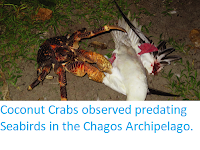The nest of hundreds of Least Terns, Sternula antillarum, have been destroyed by beach goers playing volleyball on a barrier island in Mobile Bay, Alabama, according the the Birmingham Audubon Society. The damage was noticed by Andrew Haffenden, a wildlife researcher who was carrying out a survey on a neighbouring spit of land that had formerly been used by the Birds (many seabirds nest almost exclusively on offshore islands that cannot be reached by terrestrial predators, with Terns favouring sand bank islands, which constantly form, disappear, and become connected and disconnected from other land masses, requiring the Birds to regularly move their nesting sites), when he noticed a group of tents on an island about a kilometre and a half offshore.
A hatchling Least Tern on an offshore island in Mobile Bay. Andrew Haffenden/Birmingham Audobon.
Haffenden immediately raised the issue with the U.S. Fish & Wildlife Service and Alabama Department of Conservation and Natural Resources. An investigation of the island revealed a volleyball net had been set up on the island, and an area around it cleared of nests, with hundreds of eggs being placed into piles where they baked in the sun. The Audubon Society has now placed a symbolic fence around the nesting area (a symbolic fence is intended to warn people not to enter an area, but not to physically exclude them, in this case a rope on a series of posts), which seems to be being respected, and the island is now being visited regularly by patrols by the Alabama Department of Conservation and Natural Resources.
Abandoned tents on an offshore island in Mobile Bay used for nesting by Least Terns. Ben Raines/AL.
Least Terns are migratory Birds nesting around the shores and inland waterways of North America during the summer and overwintering in Central America and the Caribbean. They are not considered threatened internationally, but many US populations are considered to be vulnerable, particularly those that nest on inland waterways that have been heavily modified by Humans, and on the Gulf Coast, where they were badly effected by pollution following the Gulf Oil Spill of 2010.
See also...
Follow Sciency Thoughts on Facebook.








